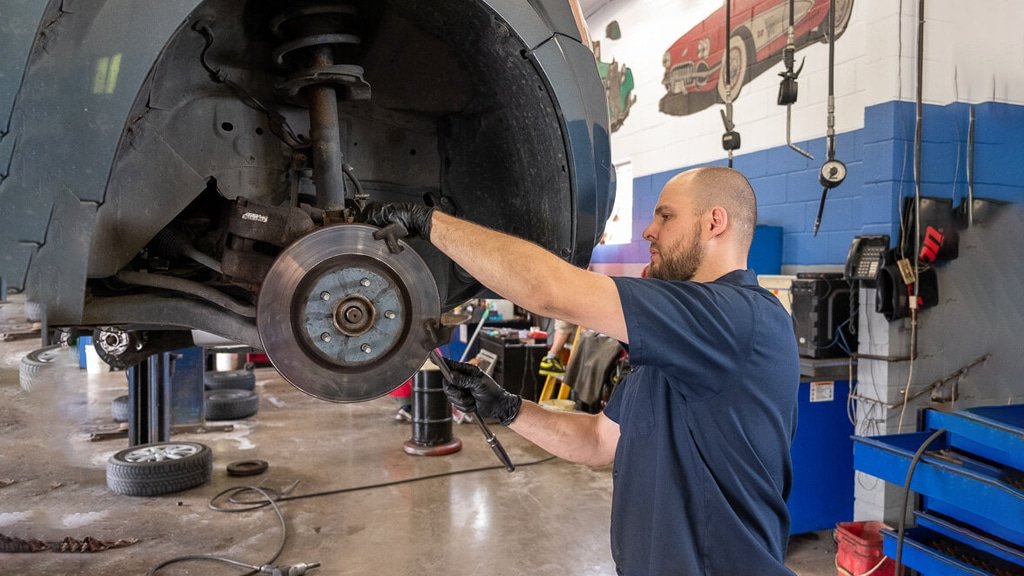Driving while your steering pulling can be hard to do and it is tough on your tires too. Problems of this nature need to be dealt with before it gets worse or causes more complicated problems.
Steady Steering Pull
In this case, the vehicle pulls to one side or the other while driving on a straight path. The driver generally has to keep a steady pressure on the steering wheel just to keep the car driving in the lane. Following are some of the common causes of steady steering pull.
Tire Problems that may cause Steady Steering Pull
- Low tire pressure can cause a vehicle to lead towards one side or the other, usually in a front tire. This is easily corrected by inflating the tires back to the recommended pressure.
- Mismatched tires will pull toward the side offering the greatest rolling resistance. You should compare tire sizes, as well as the tread wear, tread styles and patterns. In some cases different brands may even cause an issue.
- Uneven tire wear can cause an effect similar to the kind experienced with the camber, causing your tire to roll toward whichever side is most worn. Uneven wear could be the result of incorrect camber, toe or failure to rotate the vehicles tires regularly enough to even out the wear. One way to check this is to rotate the tires side-to-side. If doing this reverses the direction of pull, your tires are ready to be replaced.
Uneven camber side-to-side, or too much cross camber, can cause your auto to pull toward the side with the most, or positive, camber. This means it is leading away from the side with the least, or negative, camber. The actual cause for this could be a bent strut, dislocated strut tower, a bent spindle, failed control arm bushing, weakened or broken spring, a shifted crossmember or engine cradle.
Uneven caster side-to-side, or too much cross-caster, may cause a car to pull toward the side with the least caster. The usual core causes are a bent strut, bent spindle or dislocated strut tower.
Rear axle steer is when your front wheels are properly aligned but the vehicle pulls to one side or the other. The root cause of the trouble could be rear toe out of spec, a bent rear axle, misaligned chassis or a combination of them.
Unbalanced power assist, meaning the seal is leaking on the control valve. off-center steering can route hydraulic pressure into one side over the other of the boost cylinder piston, which causes the steering to try to turn itself to one side or the other.
Ply steer. This is a manufacturing defect with the way your belts are positioned inside the tire. This causes a tire to produce a lateral force as the tire is rolling. To test for ply steer, drive your car forward, and then go in reverse. If the direction the car is pulling in changes as you do this, one or more of your tires is at fault.
Brake drag is when the pulling is constant and to one side. In some instances it may even become worse when the brakes are applied. But if the pull only occurs when the brakes are being applied, the problem just might be unequal braking instead. The car will pull toward whichever side offers the stronger front brake, pointing you the side with a weak or failing front brake. Uneven braking may be caused by a floating caliper that sticks, a frozen caliper piston, using different grades or brands of brake linings on side-to-side wheels, fluid leaks, or even contaminated or soiled linings on one side.
For help with your steering pull problems, visit Sanford’s Automotive Service at 7917 Wilson Blvd. in Columbia, SC. Their ASE Certified Master Mechanic will get it fixed right the first time and get you safely back on the road. To set an auto repair appointment for your car or truck, contact us and you can become our next loyal customer.

